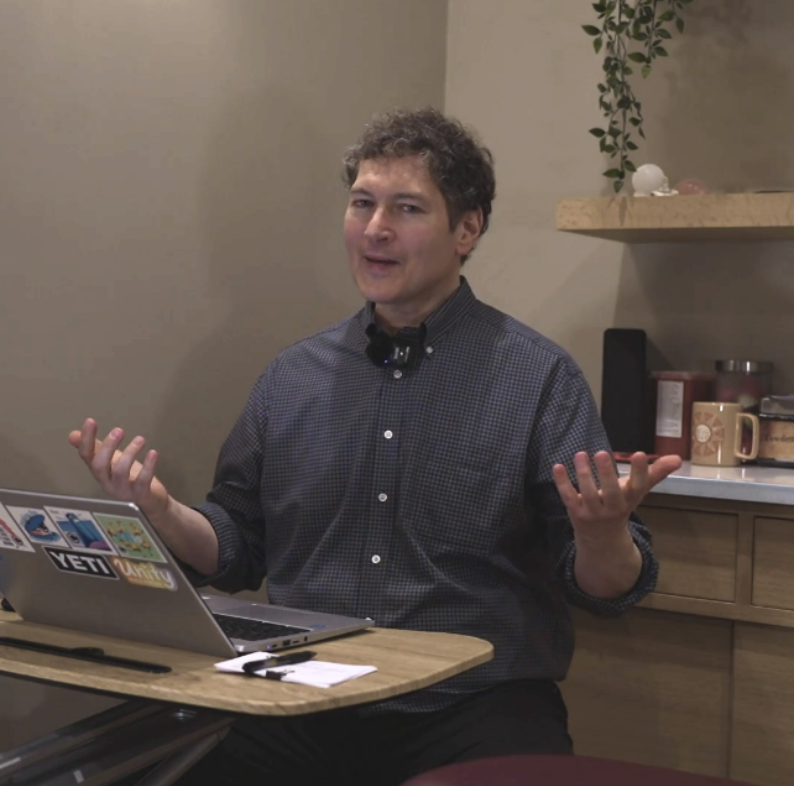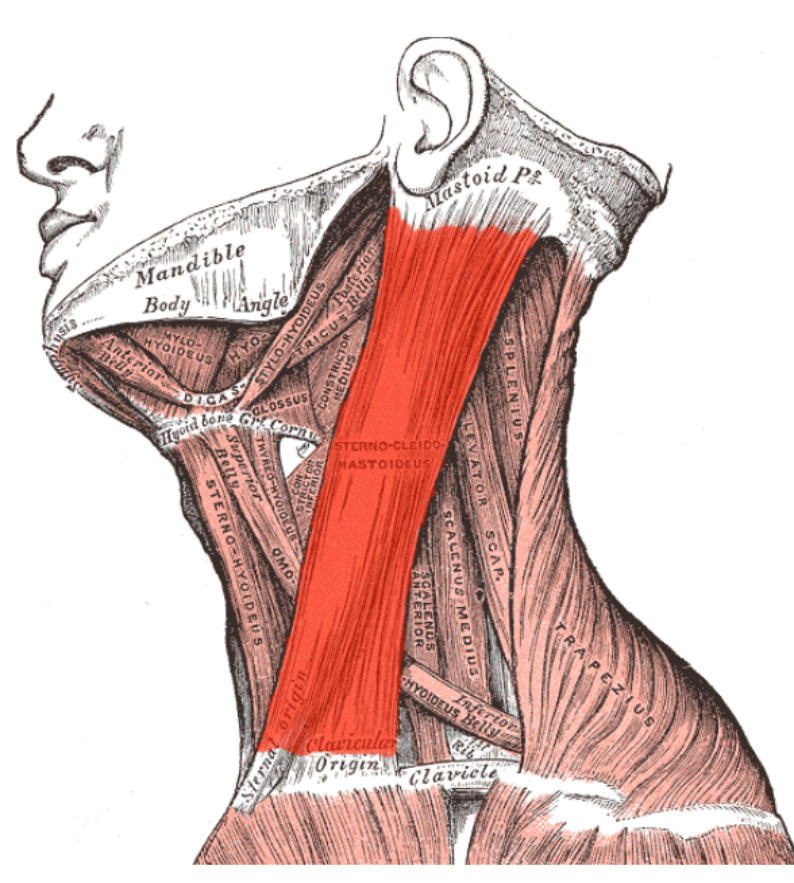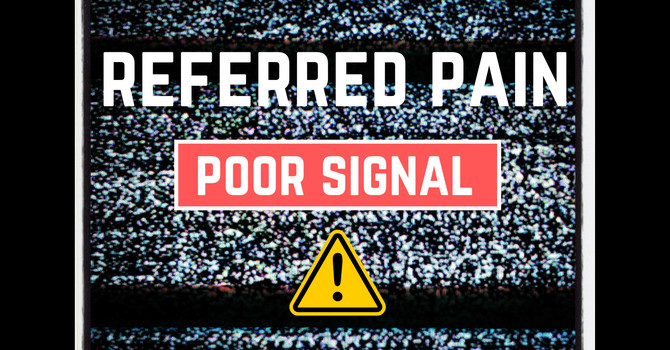“So Doctor J, what’s your favorite muscle?”
Ooo, that’s a tough one. I’d have to say that it depends on what happens if the muscle goes into spasm–how exactly can it mess up your day?
Sure, a crampy levator scapula can give you a nasty stiff neck, and a spastic iliopsoas could either cripple your back or double you over with a groin pull, depending on its mood. Of the 650-plus skeletal muscles of the human body, though, I’d have to go with the sternocleidomastoid, which even the geekiest docs just call SCM.

Where is the SCM?
Anatomists were among the kindest, most merciful academics ever to have existed. Whereas most scientists name their discoveries after themselves or favorite Star Wars characters, anatomists often named muscles and bones after their shapes, functions, or attachments. Take the aforementioned levator scapula, for example–it’s Latin for “raise the shoulder blade,” which is exactly what the muscle does.
The name sternocleidomastoid reveals the three bones to which the muscle attaches: The sternum, AKA breastbone. Kleis is Greek for collarbone. Last, the mastoid process, a bump of the skull behind the earlobe. The SCM is thus shaped like an upside-down Y, running down from the mastoid process and splitting into the sternal and clavicle (collarbone) heads:

What makes the SCM get tight?
Oh, lots of things:
- Jutting your head forward, a posture demonstrated by both slouchers and high-anxiety types.
- Keeping your head turned to either side. I see this most often in patients who sleep face down or sit with a computer monitor that’s off to one side.
- Cradling your phone. I don’t see this often anymore, now that land lines are extinct, but violinists similarly cradle their instruments.
- Whiplash often overstretches and strains the SCM, causing it to rebound into spasm.
What happens when an SCM gets tight?
A tight SCM can ruin your day in so many ways!
Just look at all the different areas where you might feel the pain:
- The SCM itself, which is surprisingly painless even when very strained–until somebody touches it or you try to turn your head
- Back of the neck
- Throat, especially when swallowing
- Ear, which could present as pain, tinnitus, or a popping sensation. (I once had an earache that lasted weeks until I had my SCM massaged, an immediate cure.)
- Jaw, mimicking TMJ pain
- Temple
- Eye
Pain aside, a tight SCM can present itself in bizarre and unexpected ways: nausea, dizziness, or vertigo. This might be because of the muscle’s proximity to the carotid artery, which contains receptors that influence your blood pressure and heart rate. I know of a photographer who had to put her career on hiatus because, every day at work, she would faint. She eventually associated the fainting spells with looking into her camera–which required her to lean forward and down, protracting her neck.
So what can I do, Doctor J?
It’s simple enough for Cornerstone’s providers to coax a tight SCM to release.
We can then train you with exercises to improve your posture and teach you self-massage techniques so you can release the muscle yourself.
Just click here to schedule!
Dr. J. McCrackan
Contact Me


